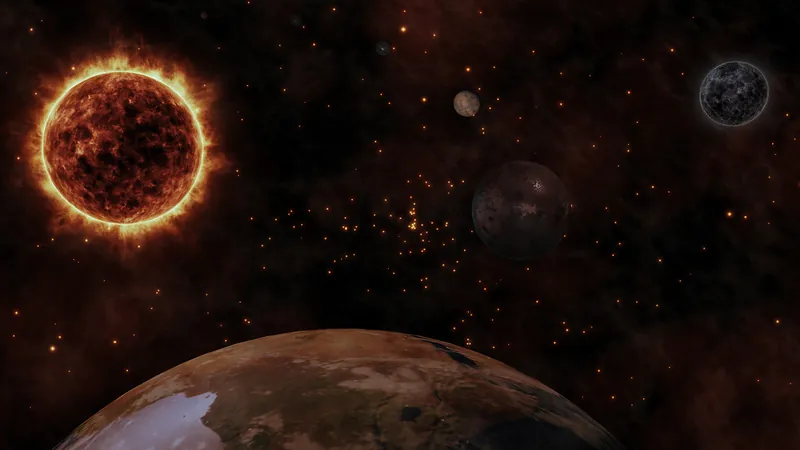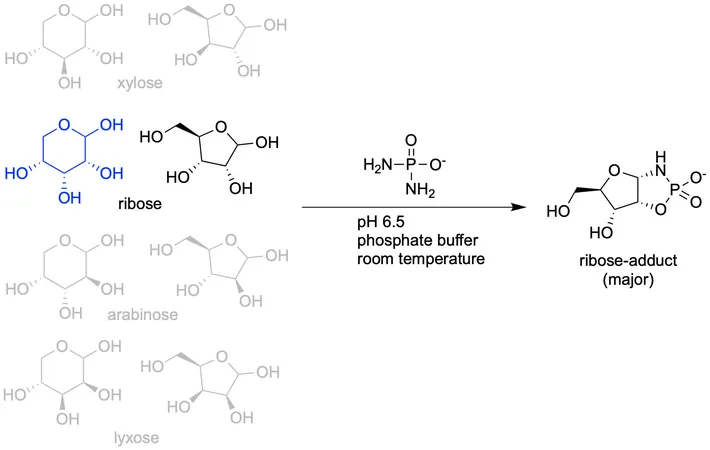
The Solar System's Inevitable Fate: When Will It Meet Its End?
2025-07-20
Author: Emma
The Lifespan of Our Cosmic Neighborhood
Our solar system has thrived for 4.6 billion years, a mere blink in the 13.8 billion-year evolution of the universe. But the intriguing question arises: when will it all come to an end?
Defining the Death of the Solar System
The timeline for the solar system's demise hinges on how we define its 'death'. It houses eight planets, numerous dwarf planets, countless moons, and untold billions of asteroids, comets, and meteoroids. The boundaries of the solar system spark debate among astronomers. Key contenders include the Kuiper Belt, marking a range of icy bodies beyond Neptune; the heliopause, where the sun's magnetic influence wanes; and the Oort Cloud, a theorized icy expanse beyond both the Kuiper Belt and heliosphere.
The Sun: A Fiery Fate Awaits
At the core of our solar realm, the sun is a stellar powerhouse, continuously converting hydrogen into helium through nuclear fusion. This process will sustain it for another 5 billion years, according to Fred Adams, a theoretical astrophysicist. As this hydrogen supply dwindles, the sun's stability wanes, leading it to swell into a massive red giant destined to engulf Mercury—and possibly Venus—before reaching Earth.
A Harrowing Transformation
Ultimately, our planet could be swallowed by this expanding giant, long after humanity's exit. Mars might escape this fiery fate, remaining on the outskirts, while the outer planets will be safe from the inferno's reach. The Oort Cloud will face upheaval, with the heliosphere collapsing inward.
The Ice-Cold Future of the Solar System
In about a billion years post-red giant phase, the sun will shrink into a white dwarf—a dim, dense remnant of its former self. At this stage, the solar system will transform into an icy, barren wasteland.
Life as We Know It Will Be No More
As Alan Stern, a planetary scientist involved with NASA's New Horizons mission, aptly put it: "From a habitability standpoint, that's the end of the solar system." Yet, this doesn't translate to an absolute end. Even in a twilight state, objects like Jupiter will persist in their orbits around the remnants of the sun.
Future Chaos Awaits
Venturing even further into the cosmic timeline, the solar system will face greater instability post-sun's death. As gravitational forces change, the risk of catastrophic collisions or encounters with passing stars and supernovae will escalate, potentially displacing celestial bodies and debris across the void.
An Uncertain Yet Endless Wait
We're not merely awaiting the universe to age twice its current span; we're talking about a billion, even a trillion, years into the future. The longer we wait, the more probable rare cosmic events become. Imagine the odds of a lottery win—rare as they are, they increase dramatically with every ticket you buy.
The Mysteries of Proton Decay
Even if the solar system navigates through potential disasters, it cannot escape forever. Theoretical predictions suggest that protons—the fundamental building blocks of matter—may eventually decay. Though never observed, scientists speculate their lifespan could extend beyond the staggering 10^34 years.









 Brasil (PT)
Brasil (PT)
 Canada (EN)
Canada (EN)
 Chile (ES)
Chile (ES)
 Česko (CS)
Česko (CS)
 대한민국 (KO)
대한민국 (KO)
 España (ES)
España (ES)
 France (FR)
France (FR)
 Hong Kong (EN)
Hong Kong (EN)
 Italia (IT)
Italia (IT)
 日本 (JA)
日本 (JA)
 Magyarország (HU)
Magyarország (HU)
 Norge (NO)
Norge (NO)
 Polska (PL)
Polska (PL)
 Schweiz (DE)
Schweiz (DE)
 Singapore (EN)
Singapore (EN)
 Sverige (SV)
Sverige (SV)
 Suomi (FI)
Suomi (FI)
 Türkiye (TR)
Türkiye (TR)
 الإمارات العربية المتحدة (AR)
الإمارات العربية المتحدة (AR)